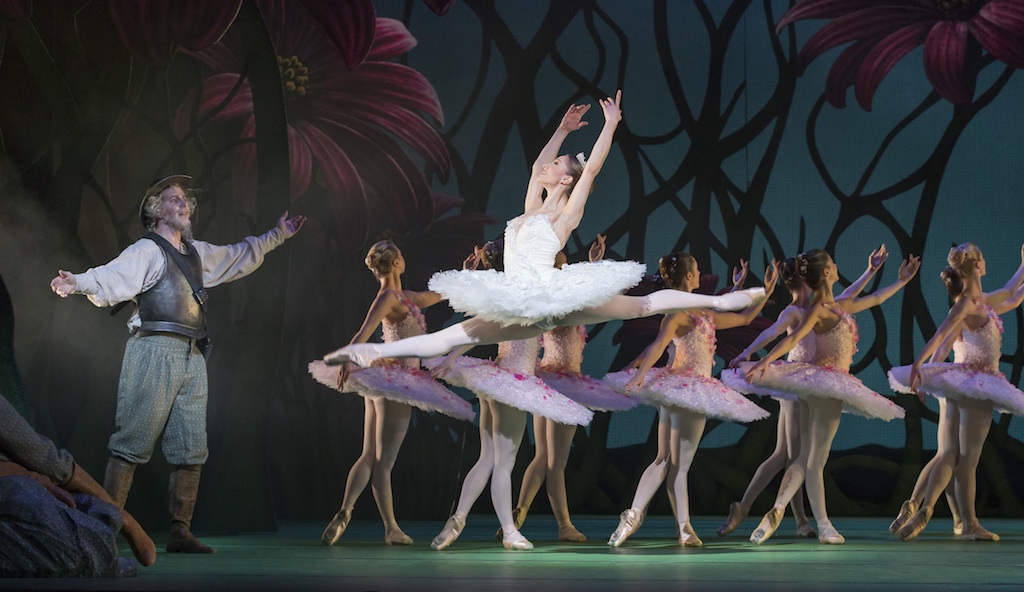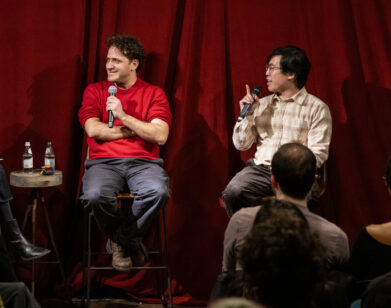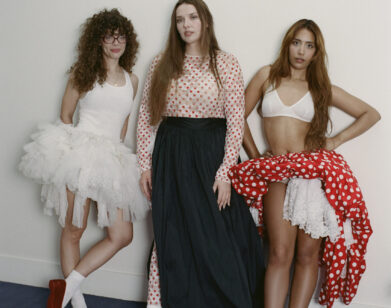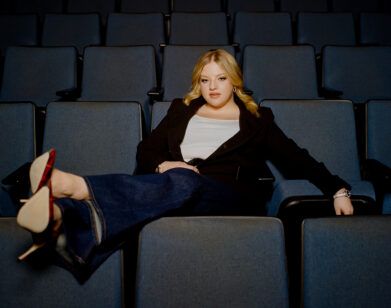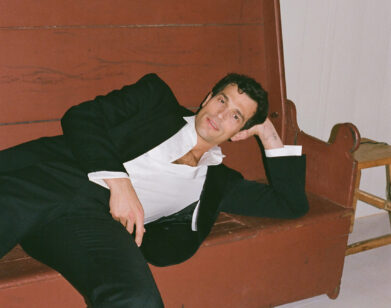Londonâ??s Royal Ballet Gets Ready for its Close-Up
London’s Royal Ballet certainly knows how to put on a show. The company, founded in 1931 by Dame Ninette de Valois of the Ballets Russes and currently endorsed by the Queen herself, has cultivated a renowned line-up of dancers and programming at its home base in Convent Garden. But with its Cinema Live series, a selection of productions that broadcast live from the theatre to over 1,000 cinemas in 38 countries, the box seats are going global.
The new season begins tonight with a new production of Cervantes’ classic, Don Quixote. Choreographer Principal Guest Artist Carlos Acosta, who has danced with the National Ballet of Cuba, the America Ballet Theatre, and the Bolshoi, will also take the lead role of Basilio, a bumbling knight, accompanied by Argentine-born company principal Marianela Núñez as Basilio’s lover, Kitri.
On the occasion of tonight’s performance, Interview spoke with Acosta and Núñez, both in London, early last week.
COLLEEN KELSEY: How does the live cinema performance compare to a normal performance?
CARLOS ACOSTA: It means that a lot of people will have the chance to see what we do normally. The theater holds about 1,500 to 2,000 people. And, now with this opportunity, not only you will reach out to these 2,000 people who are watching on the night, but all these other people who will be watching on the cinemas around the world. If you count all those people—you know, you only do the one performance—but, then, it means that really hundreds of thousands of people will see it. And that is a really, really big exposure for us.
MARIANELA NÚÑEZ: It’s a fabulous experience because you know that you’re going to not only be watched by the people in the theater, but you’re reaching the whole world. It’s very exciting. It’s an incredible feeling. But, at the same time, obviously, you know you’re going to be filmed and there’s not going to be any editing so whatever happens, happens, and you’re going to be watched by a lot of people. So that already that creates a lot of adrenaline. [laughs]
KELSEY: You’re in preparation for this performance of Don Quixote, and I know you’ve danced it before. Don Quixote is a very classical ballet—is there any way you put your own spin on it?
ACOSTA: The thing about the classical [ballet] is that we combine them with many other ballets behind the repertoire. Sometimes we do [George] Balanchine or [choreographer Sir Frederick] Ashton’s work. We got so many things that we have no time to get bored because the whole repertoire is very versatile and very dynamic. The classicals are very demanding on your body, and they’re very hard. And most of the time we have to deal with pain. I mean, especially, in me, now, in the stage that I am in my career, it means that [things] don’t come as natural anymore and I have to deal with pain constantly. But it’s always fun, too. Don Quixote is a very vibrant ballet, very fun, very lively, and it’s just a joy to dance because it’s a very feel-good atmosphere.
NÚÑEZ: Don Quixote is an amazing ballet. Whoever comes to watch it will always go home with a huge smile on their face. You know, it’s fun, it’s sort of comedy, it’s great dancing. The music is very alive. This production, I think, is fantastic. He’s done an amazing job. Carlos has done Don Qui all over the world; he’s done different productions. So, he’s definitely the right person to take this on board. And, what he created is beautiful. Everything about it—from the choreography part of the ballet, and then from the sets and the costumes—it’s looking really good. The people that will see it in the cinemas, they will get probably more little details because the cameras are so close and there’s so much going on on the stage.
KELSEY: How has it been dancing together?
ACOSTA: Marianela’s been born to dance this ballet. I mean, she’s been born to dance, period. This ballet is like a glove that she can just put on and it fits perfectly. We both come from a Spanish background and it means that the communication is very easy. We really have a great understanding of what this role requires. She’s a really an amazing technician. Really big jumps. I mean, she’s just perfect for Kitri, which is her character in the ballet. I’m just thrilled to be dancing with her one more time. We’ve danced many things together and recorded a few videos together and [knew] this would be an opportunity to bring us together.
NÚÑEZ: To get back on stage with him is great. He’s an amazing guy. You know, a lot of energy, you know, he’s a big, big star, so to be sharing the stage with him is just a wonderful experience. What’s really nice is that, we’ve done this ballet together 10 years ago, and it was the year I got promoted to principal after this ballet. I got to chance to do Don Qui with Carlos, who was already a big star at the time. And then, after that, I became a principal dancer—after the show. It’s a very special ballet for me.
KELSEY: Carlos, you’ve been compared to [Mikhail] Baryshnikov and [Rudolf] Nureyev—incredible and iconic dancers. Have you ever been inspired by them, or looked up to them, throughout your career?
ACOSTA: I think everybody from my generation, but even for the future generations of dancers, they have to say “thank you” to Baryshnikov and Nureyev for equalizing the role of the male dancer to the female to the point that people would come to see them, regardless of who they were dancing with. It’s just great that we had role models like that. Certainly, for me to be compared with people who are two legends in this art form is really great. Of course, I try always to have my own line and I never set myself a task to have a crown or anything like that, you know? I just did the best I could. That’s what I always set myself to do.
DON QUIXOTE WILL AIR TONIGHT, OCTOBER 16, AT 7 PM LOCAL TIME IN SELECT THEATERS AROUND THE WORLD.

